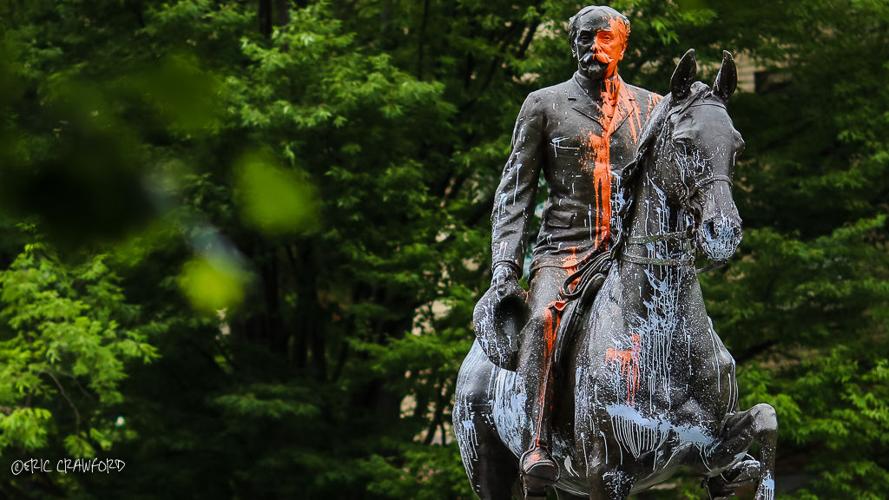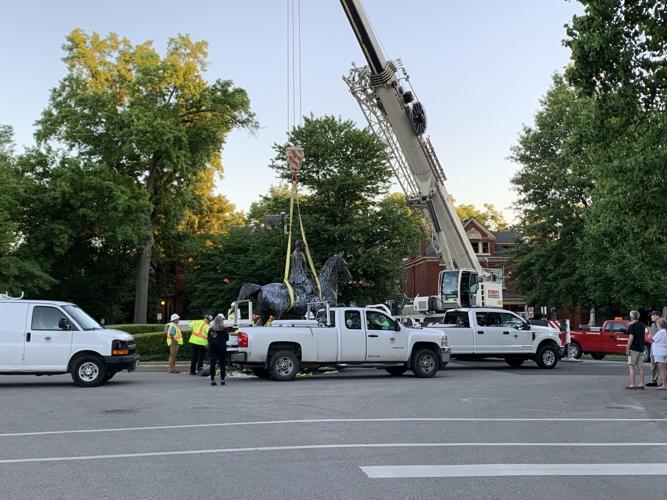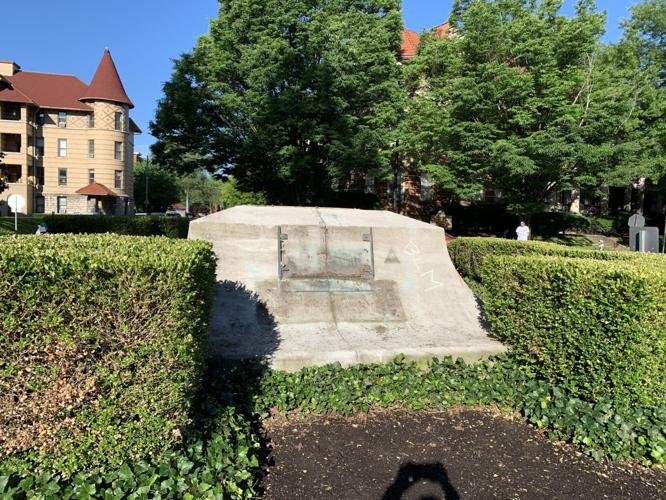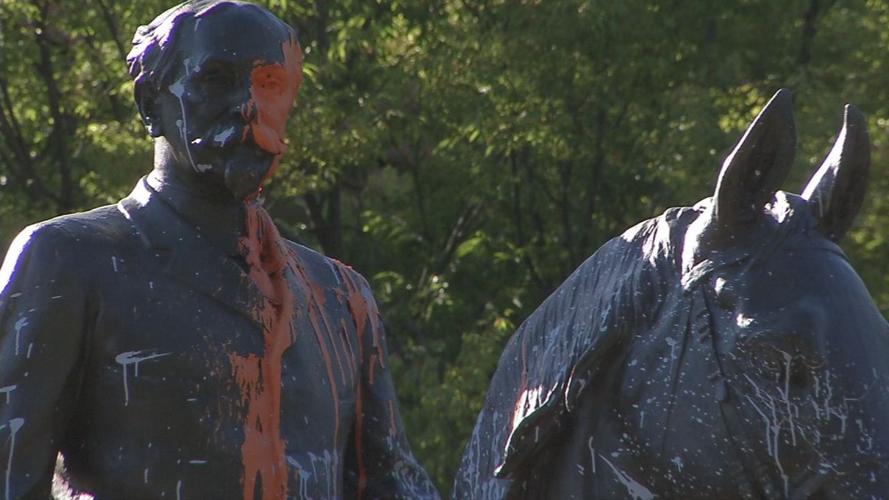LOUISVILLE, Ky. (WDRB) -- The Kentucky Supreme Court heard arguments Thursday on whether the city of Louisville improperly removed the controversial John B. Castleman statue from Cherokee Triangle in 2020.
The thrust of the case is not whether the statue of Castleman riding a horse, dressed in civilian clothes, served as a symbol of "racist or bigoted ideology,” as former Mayor Greg Fischer has said, but whether the city followed due process in removing it.
Attorney Steve Porter, who represents a group called Friends of Louisville Public Art, argued that two commissioners on the Historic Landmarks Commission, which voted to remove the statue, had a conflict of interest as they were hired by Fischer.
“Without their votes, the application (to remove the statue) would have been denied,” Porter told the justices. “What public officer hired by the mayor would admit, ‘I have a conflict?’”
And Kentucky Chief Justice Laurance VanMeter repeatedly noted that the two commissioners were at-will employees Fischer could fire without giving a reason.
“You have two decision makers who are participating whose vote gets it over the top who are subject to at-will employment by the mayor who is also the applicant in this process,” he said during the hour-long hearing in Frankfort.
Assistant Jefferson County Attorney David Sexton argued while there may be an “appearance” of a conflict of interest, there is no actual proof, which was the ruling of the state Court of Appeals previously in this case.
“You don’t think that voting in favor of your employer on an application where you are an at-will employee is subject to the reasonable appearance of impropriety?” VanMeter asked Sexton. “That’s the argument?”
Sexton responded that while “that is in appearance,” the law necessitates there be “substantial evidence to support that decision as the ultimate test.”
It is unclear when the state Supreme Court will issue a final ruling.
If the high court rules the statue was inappropriately removed, it could be cleaned and returned to its pedestal in the roundabout.
The monument in the Highlands was the center of controversy for years because its critics argue that Castleman is closely associated with the Confederacy and white supremacy. The statue, which was erected in 1913, was vandalized numerous times.

The often-vandalized statue has been the source of much debate. (WDRB Photo)
The statue currently sits in a gated government lot, covered in bright orange spray paint.
But the group fighting to save the statue has argued that Castleman redeemed himself later in his life, renouncing the confederate cause, calling on white soldiers to salute black officers in World War I and helping to establish Louisville’s park system.
Porter told the justices Thursday that the statue is “very historical” and former Mayor Fischer had it removed “for political reasons.”
The high court agreed in June of last year to hear arguments after the state Court of Appeals upheld a Jefferson Circuit Court judge’s ruling dismissing the lawsuit.
The appeals court ruled, in part, there were "no facts to support the conflict of interest claim."
Fischer announced the removal of the Castleman and George Prentice statues in 2018, saying they served as racist symbols. The Prentice statue was removed from its spot in front of the downtown library in December 2018.
On May 9, 2019, Louisville's Landmark Commission voted to remove the Castleman statue.
The Landmark Commission's vote followed a January 2019 vote by the Cherokee Triangle Review Commission that ended in a tie, meaning the statue could not be removed.
That's when the city appealed to the Landmarks Commission, which gave the green light for the statue's removal.
Porter has said the commission's decision to remove the statue from the park Castleman helped create was "arbitrary and erroneous" and cited several "flaws" in the process.
On Thursday, he called the process a “sham” and said there were no findings of fact to remove the statue.
“There was no discussion or anything else,” he told the justices.
The lawsuit claims officers and employees who voted during the process should have recused themselves and that recommendations from the Public Art and Monuments Advisory Committee were not considered by the Landmarks Commission.
According to the suit, the statue was referred to as a "landmark" in a Louisville Metro publication and has been considered an icon in the neighborhood for more than a century.
Copyright 2023 WDRB Media. All Rights Reserved.








